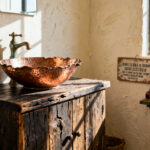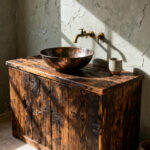Picture this: It’s a perfect summer evening. The doors from your kitchen are wide open, letting in a soft breeze and the scent of jasmine from the garden. You’re standing at your island, chatting with friends as they move easily between the kitchen and the patio. The space just flows. The kitchen isn’t just a room; it’s the heart of your home, the place where indoor comfort meets outdoor freedom.
That’s the dream, right? But then you look at your actual kitchen and see the worn-out cabinets, the cramped layout, the dizzying price tags on everything. It feels impossible. But it’s not.
I spend my days designing outdoor living spaces—blurring the lines between inside and out. The same principles that create a great garden or patio can create a stunning kitchen without an astronomical budget. It’s about working with what you have, choosing materials that feel good and wear well, and putting your money where it truly matters. Forget the noise and the endless spreadsheets. Here’s how you actually get it done.
Foundational Planning & Strategic Budgeting
Think of this part like designing a garden. Before you even think about which plants to buy, you have to get the “hardscape” right—the layout, the pathways, the retaining walls. Get the foundation wrong, and you’ll be fighting it forever. Get it right, and everything else you do will look and feel better.
1. Thoroughly Define Non-Negotiable Kitchen Remodel Features
People always ask me, “Where do I even start?” You start by figuring out what you absolutely cannot live without. This isn’t a wishlist; it’s your core mission. It’s the equivalent of deciding where the sun hits in your garden. Do you need a big sunny spot for gathering (an island), a shady nook for quiet morning coffee, or a workhorse area for serious “planting” (cooking)? Be honest about what truly frustrates you about your current kitchen. Is it the lack of counter space? The terrible flow that creates traffic jams? The ancient stove?
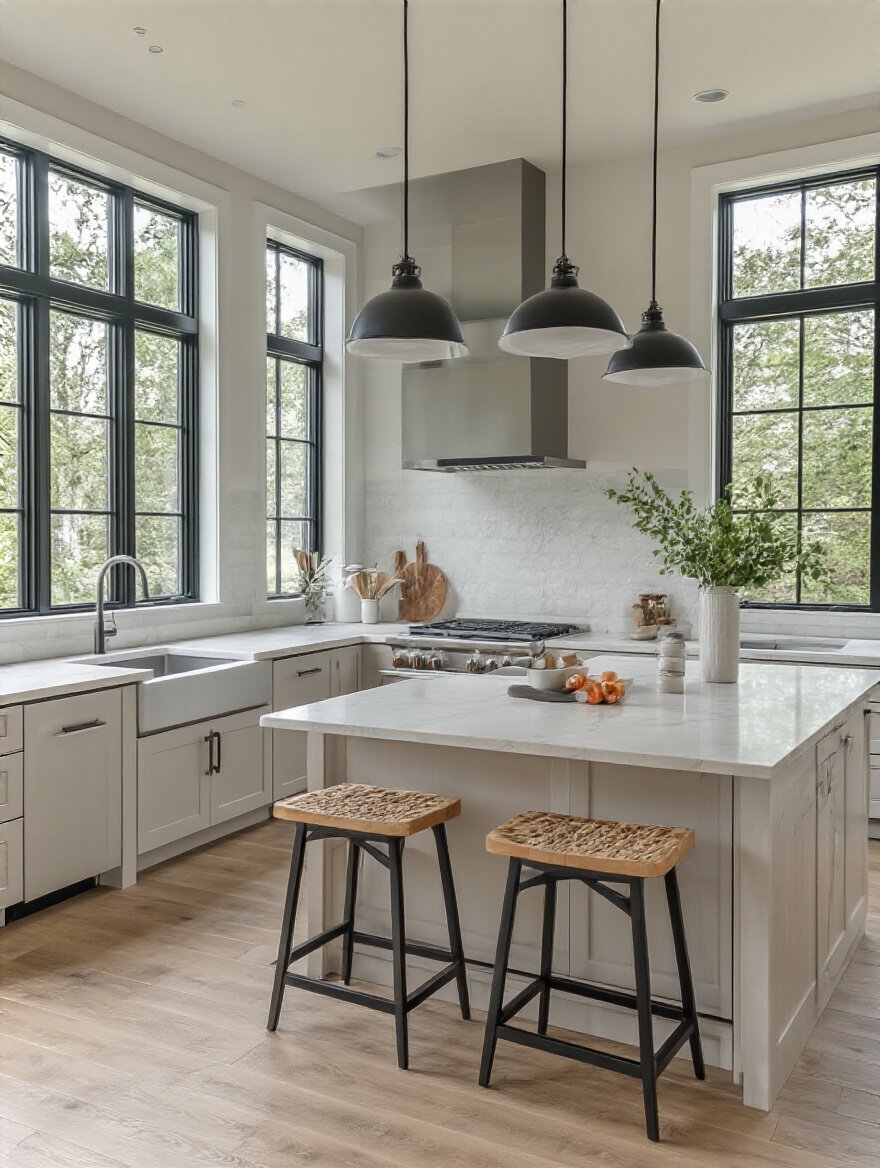
Make a simple list with two columns: “Must-Have” and “Nice-to-Have.” Your must-haves are the functional core: durable countertops, a reliable stove, a layout that actually works. A pot filler? That’s nice to have. Forcing yourself to prioritize like this is the single best way to avoid the budget creep that kills most remodels. I had a client once who got so focused on a specific kind of expensive tile they saw in a magazine that they ran out of money for decent lighting. Now they have a beautiful, dark, and mostly unusable kitchen. Don’t be them.
Focus on your kitchen’s functional core first, then let the rest follow. That’s the secret to getting a space you’ll love for years to come.
2. Create a Detailed Budget Plan to Prevent Cost Overruns
A budget isn’t a prison; it’s a plan. And a good plan gives you freedom. It’s the difference between wandering aimlessly through a nursery and knowing you need three boxwoods, five lavender plants, and a bag of mulch. You have to account for everything, not just the big, shiny things like appliances and cabinets. People always forget the “soft costs”—the permits, the dumpster rental, the fact that you’ll be eating takeout for three weeks.
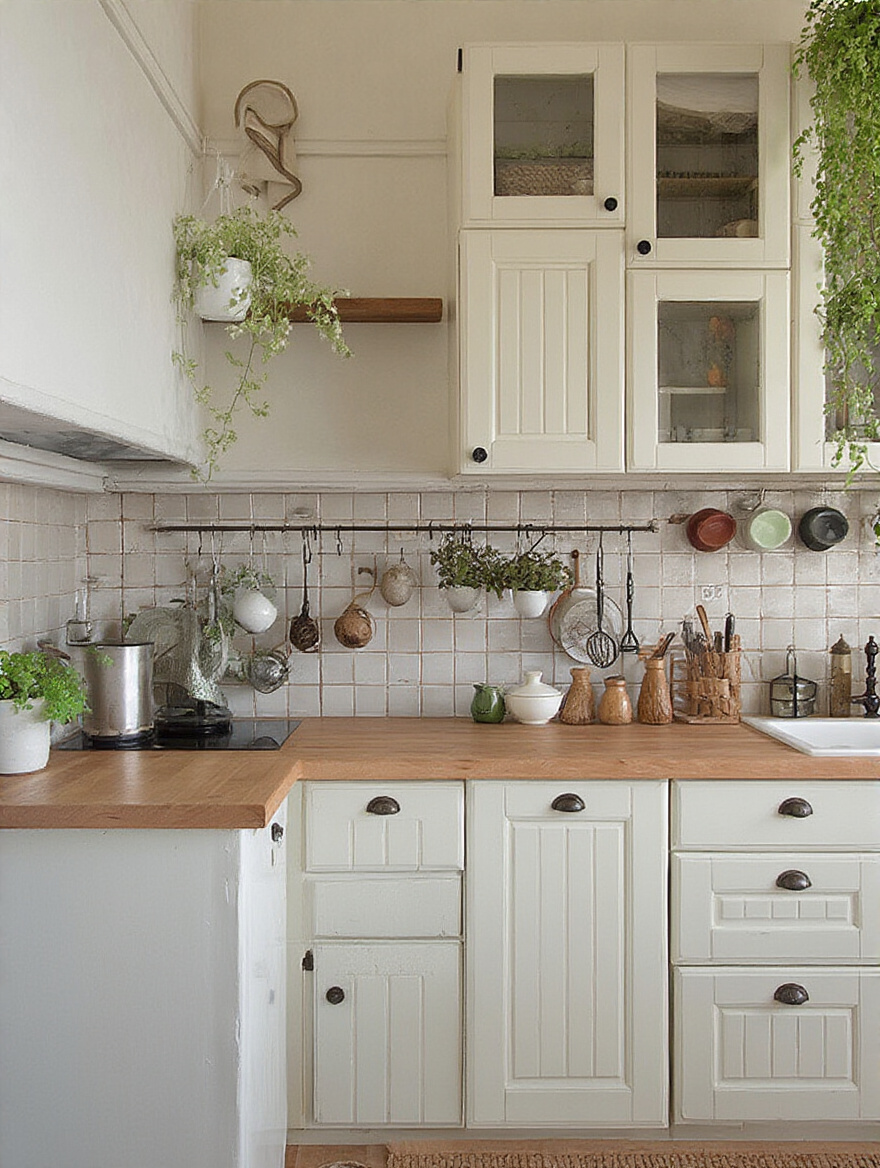
The most important part of your budget isn’t a line item for tile or a faucet. It’s your contingency fund. Set aside 15-20% of your total budget and do not touch it. That’s your “oh crap” fund. Because when you open up a wall, you might find old plumbing, sketchy wiring, or a family of raccoons. I learned this the hard way on my own patio project when we discovered our foundation wasn’t up to code. My contingency saved me from a complete disaster. Without it, a surprise problem sends your entire project off the rails.
3. Preserve Existing Kitchen Layout to Dramatically Reduce Expenses
Can we talk about my biggest pet peeve? It’s when people are convinced they need to tear down walls and move every single pipe and wire. In landscape design, we call this fighting the grade. You can do it, but it’s brutally expensive and often unnecessary. The most powerful budget strategy you have is to love the layout you’ve got. Keeping your sink, dishwasher, and stove in the same general location can save you, literally, tens of thousands of dollars.

Think of your kitchen’s plumbing and electrical as the deep roots of a mature tree. You don’t just go digging them up for fun. Instead, you work around them. Focus your money on what you see and touch every day: new cabinet fronts, beautiful countertops, a backsplash that makes you happy, and lighting that changes the entire mood of the room. A client of mine kept their exact U-shaped layout but went for dramatic dark green cabinets, a butcher block counter, and great lighting. It felt like a completely new, high-end kitchen, but they saved a fortune by not moving a single pipe.
This is your shortcut. Accept the footprint. Master the finishes.
4. Solicit At Least Three Detailed Contractor Quotes for Comparison
Alright, you wouldn’t hire the first landscaper who gives you a number scrawled on the back of a napkin, right? You need to get at least three detailed quotes. And I mean detailed. Itemized. If a quote just says “Kitchen Remodel: $40,000,” run away. You want to see the cost for demolition, electrical, plumbing, cabinetry, installation—everything broken down. This is the only way you can truly compare apples to apples.
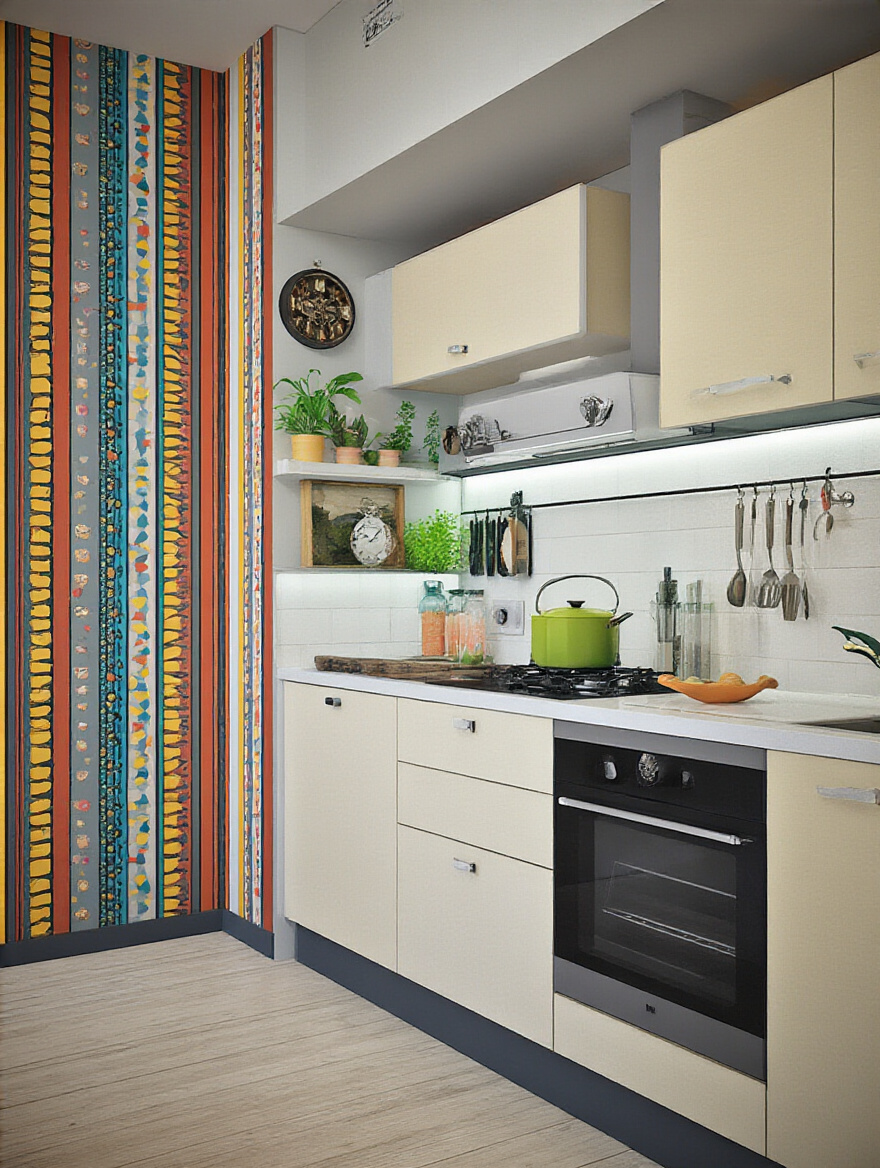
A few years ago, I was getting bids for a built-in outdoor kitchen. One was suspiciously low. When I dug in, I realized he hadn’t included the cost of running the gas line or the proper outdoor-rated electrical outlets. That “deal” would have cost me thousands more in change orders down the road. The cheapest bid is almost never the best bid. Look for the one that is the most thorough and transparent. That’s the person who understands the job and isn’t planning to hit you with surprises later.
5. Scout Local Reuse Centers and Salvage Yards for Hidden Gems
Here’s where the real fun begins. I have a confession: I am obsessed with salvage yards. They’re like treasure hunts. You can find things with history and soul that you could never buy new. Think solid wood cabinet doors, a beautiful old farmhouse sink, or a unique light fixture that becomes the centerpiece of your whole design. For me, it’s like finding a perfectly weathered stone wall or a reclaimed iron gate for a garden.

The trick is to go in with measurements and an open mind. You might have a specific idea for your island, but then you find an incredible old workbench that’s the perfect size and has a story to tell. Don’t be afraid to let a great find shape your design. A friend of mine built their entire kitchen around a set of gorgeous, solid maple cabinets they found at a Habitat ReStore for $800. That one find saved them enough money to splurge on the stone countertops they thought they couldn’t afford. It’s the ultimate win-win: you save a fortune and your kitchen has character no one else can replicate.
With a solid plan, your next big win comes from making smart, beautiful material choices.
Cost-Effective Material & Feature Selection
Now we’re at the fun part—the “plantings.” This is where you choose the colors, textures, and features that bring your space to life. You don’t need the most expensive and exotic specimens to create a beautiful garden, and you don’t need Carrara marble to create a beautiful kitchen. It’s all about choosing wisely.
6. Reface or Paint Existing Cabinets for a Modern Fresh Look
If your cabinet boxes are in decent shape, tearing them out is a criminal waste of money. Cabinets are almost always the biggest single expense in a kitchen remodel. Painting or refacing them is the most dramatic, budget-friendly transformation you can make. It’s like repainting your house—instant gratification and a massive change for a relatively small investment.

Don’t skimp on the prep work. This is the BS everyone gets wrong. They think you can just slap some paint on there. No. You have to clean, sand, and prime meticulously, especially in a kitchen where there’s grease and moisture. Use a high-quality paint designed for cabinets—something durable that can take a beating. A few years back, I helped my sister paint her dated, 90s-oak cabinets a deep, moody green. We swapped the hardware for simple brass pulls. It took a weekend and about $400, and it completely changed the character of her home.
7. Choose Stylish, Durable Laminate or Butcher Block Countertops
Everyone says you need quartz or granite, but here’s what actually happens: you spend a third of your budget on countertops and then have to compromise on everything else. Let me tell you about butcher block. As someone who designs with natural materials, I love it. It brings warmth and life into a kitchen. It feels good to the touch, it’s forgiving if you drop something, and you can sand out scratches and re-oil it to look brand new. It’s like a great piece of wooden outdoor furniture that just gets better with age.
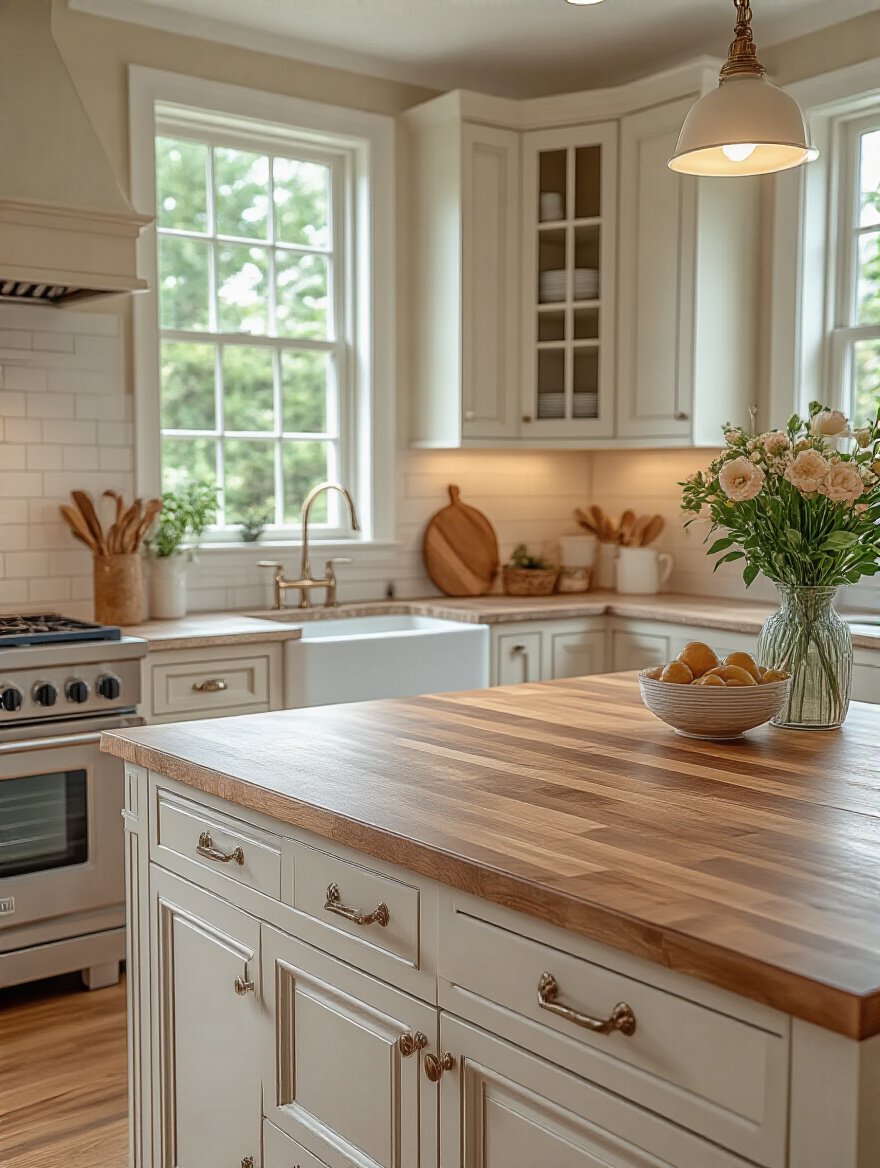
Today’s laminate is also fantastic. It’s not the stuff from your parents’ basement. The patterns and textures can mimic stone or concrete so well that you’d have to touch it to know the difference. The shortcut here is to pair a more affordable countertop with a killer backsplash. Let the backsplash be the star of the show. Your counter just needs to be a durable, beautiful supporting actor.
Once your countertops are chosen, you have the perfect opportunity to add another layer of texture.
8. Select Affordable, High-Impact Peel-and-Stick Backsplash Tiles
I used to think peel-and-stick tiles were a cheap gimmick. Then I used them in a small kitchenette project for an outdoor pool house, and I was converted. The quality now is incredible. You can get realistic-looking subway tiles, beautiful mosaic patterns, even textures that mimic stone. For a small area like a backsplash, it’s a total game-changer. There’s no grout, no mess, no tile saw. It’s a weekend project that gives you the look of a traditional tile job for a tiny fraction of the cost and effort.
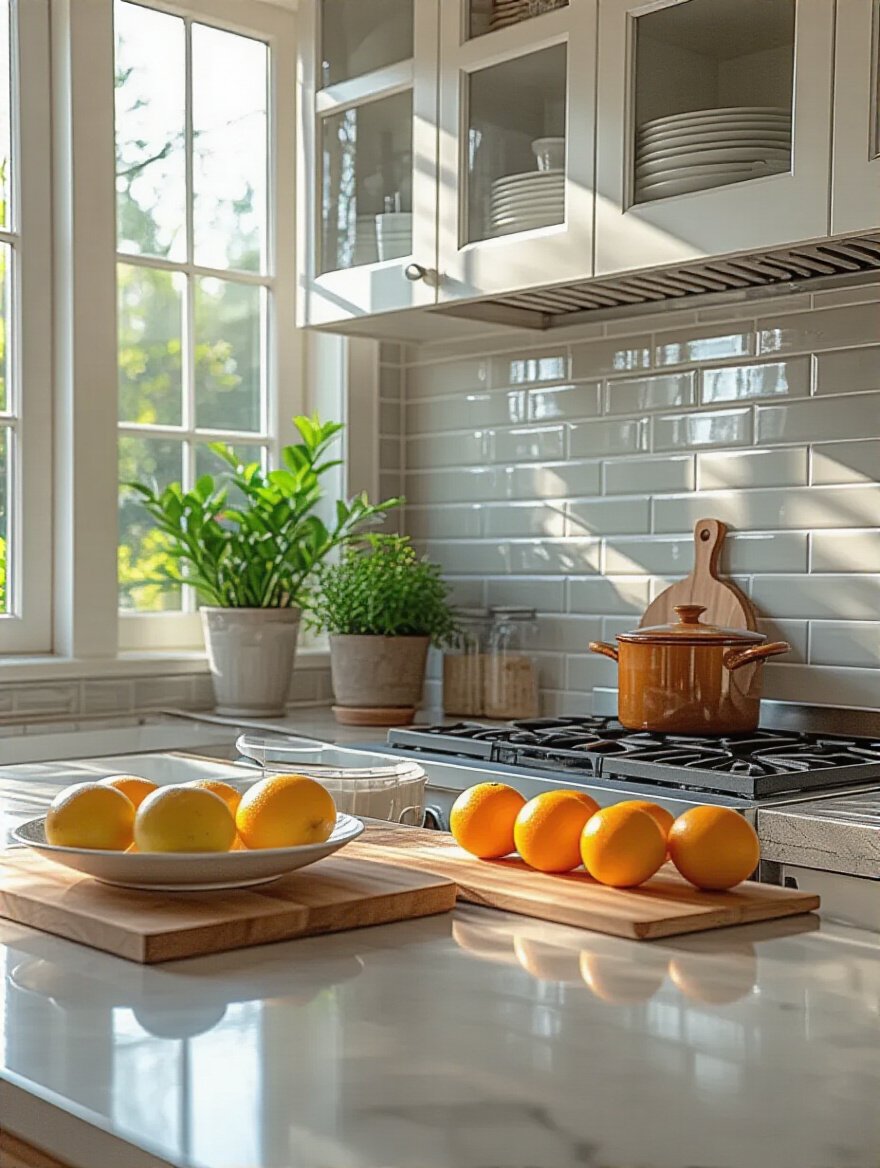
The key is preparation. Your wall needs to be perfectly clean, smooth, and dry. Take your time, line things up carefully, and use a roller to press them on firmly. For about a hundred bucks and an afternoon of your time, you can completely change the look of your kitchen. It’s the design equivalent of planting a big pot of colorful annuals by your front door—maximum impact, minimum commitment.
9. Purchase Ready-to-Assemble (RTA) Cabinets and Save Big
If your old cabinets truly have to go, RTA cabinets are your new best friend. They’re like the modular raised garden beds of the kitchen world. You’re not paying for a factory to assemble them or for the shipping costs of all that empty air inside a pre-built cabinet. They ship flat-packed, and you (or a handyman) put them together on-site. The quality has improved massively over the years; you can get solid wood doors, plywood boxes, and soft-close hardware that feel just as good as semi-custom lines.

The shortcut I wish I’d known earlier is to always, always order a sample door first. Colors look different on a screen, and you need to feel the quality in your hands. Spend the $30 on a sample. It might save you from a $5,000 mistake. A client of mine just did his whole kitchen in RTA shaker cabinets and saved enough money to put in a big sliding glass door out to his new deck, which was his number one priority. That’s a smart trade-off.
10. Hunt for Open Box or Floor Model Appliances at Deep Discounts
87% of people think you have to buy brand-new, in-the-box appliances. They’re dead wrong. The best deals are on the floor models or the “open box” items that someone returned because it didn’t fit or had a tiny scratch on the side that you’ll never see once it’s installed. You can often get premium brands for 20-50% off. It’s how I got the high-end grill for my outdoor kitchen—it had a small dent on the back, and I saved a grand.

The secret is to be patient and persistent. Make friends with the sales associates at your local appliance stores. Let them know what you’re looking for, and ask them to call you when a floor model of that type goes on clearance. Always inspect it carefully and, most importantly, ask about the warranty. Usually, it’s the full manufacturer’s warranty, which makes it a complete no-brainer.
11. Opt for Budget-Friendly Luxury Vinyl Plank (LVP) Flooring
I love wood floors, but in a kitchen that opens up to a patio or a garden, they can be a source of constant worry. Dirt, water, scratches—it’s a high-traffic area. Luxury Vinyl Plank, or LVP, is my go-to solution here. Think of it as the ultimate indoor decking material. It’s incredibly durable, 100% waterproof, and comfortable to stand on. And the visual technology is so good now that it can perfectly mimic the look of natural oak, slate, or just about any other material.

It creates a seamless visual flow from your kitchen to your outdoor space, especially if you choose a finish that complements your deck or patio stone. I used a warm, wood-look LVP in a project recently that extended from the kitchen right out into an enclosed sunroom. It made both spaces feel bigger and more connected, and the client doesn’t have to stress about muddy boots or spilled drinks. It’s practical, affordable, and beautiful.
12. Source Remnant Stone Slabs for Smaller Counter or Island Areas
Want the luxury of a real stone countertop on your island without paying for a whole slab? Go to a stone yard and ask to see their “remnants” or their “boneyard.” These are the leftover pieces from bigger jobs. For a large kitchen, it’s tough, but for an island, a coffee bar, or a small section of counter, it’s a goldmine. You can find a gorgeous piece of granite or quartz that’s the perfect size for a fraction of the cost.

It’s like finding a single, perfect specimen tree for a small garden. You get all the impact and beauty without needing to landscape the entire property. I once designed a small outdoor bar top using a stunning remnant of quartzite that had this incredible green veining. It cost the client $400. A full slab would have been over $3,000. It became the centerpiece of their entire patio.
13. Strategically Incorporate Open Shelving to Reduce Cabinet Needs
Can we talk about why everyone gets upper cabinets wrong? They can make a kitchen feel top-heavy and closed-in. Strategically swapping some of them for open shelving is a brilliant move, both for your budget and for the feel of the space. It opens up sightlines, makes the room feel airier, and forces you to be thoughtful about what you display. It’s a great place for everyday dishes, pretty glassware, and, my favorite, a few potted herbs.

You don’t have to go all-in. A great place to start is on either side of a window or your range hood. It creates a focal point and gives you a spot to inject some personality. The trick is to keep it curated, not cluttered. Use it to bring some life and nature inside. It’s a simple, architectural touch that saves you money on cabinets and makes your kitchen feel more like a custom, lived-in room.
14. Refresh Your Kitchen Instantly with New Cabinet Hardware
If you only have $200 to spend on your kitchen, spend it on new hardware. I am not kidding. It is the single fastest, cheapest, and easiest way to update the look of your cabinets. I call it the jewelry of the kitchen. Swapping out dated, grimy old knobs for something clean and modern can completely change the vibe of the entire room in about an hour.

Get a hardware template jig from the hardware store. It’s a little plastic guide that helps you drill the holes in the exact same spot every time. It costs about ten bucks and will save you from a world of crooked pulls and frustration. I did this in my own guest house—went from clunky 80s brass pulls to simple matte black handles. It instantly made the whole space feel more contemporary and intentional.
Now that the major surfaces are handled, let’s talk about how you can save a ton on labor by doing a few key things yourself.
Empowering DIY & Labor-Saving Strategies
This is the “sweat equity” part. In gardening, it’s weeding and mulching. It’s not the most glamorous work, but it saves you a ton of money and gives you a deeper connection to your space. You don’t need to be a master carpenter, but taking on a few key tasks is totally within your reach.
15. Handle Simple Demolition Safely and Save Professional Labor Costs
Paying someone to smash up your old kitchen and haul it away can cost a couple of thousand dollars. You can do most of this yourself. Tearing out old cabinets, countertops, and backsplashes is basically just unscrewing and prying. It’s a fantastic way to save money right at the start of your project. Think of it as clearing out the old, overgrown brush before you can plant your new garden.

Safety is non-negotiable. Turn off the water and electricity to the kitchen before you start. Wear gloves, safety glasses, and a good dust mask. And never mess with anything you’re not 100% sure about, especially load-bearing walls or major plumbing. The pro shortcut is to rent a small dumpster. It’s worth the couple hundred bucks to have a place to toss everything instead of trying to haul it away in your car over a dozen trips.
16. Confidently Paint Your Kitchen Walls, Trim, and Cabinetry Yourself
Painting is pure magic. It’s the cheapest, most effective way to completely transform a room. You are more than capable of painting your own kitchen. As I said before, the secret is 80% preparation. Clean, sand, prime. Do not skip these steps. If you’re painting cabinets, an HVLP sprayer is a great investment for a pro-level, brush-stroke-free finish, but a high-quality small roller and brush will also do the job.

I always encourage clients to look to nature for their color palette. A soft sage green, a warm earthy terracotta, a pale sky blue—these colors create a calm, welcoming backdrop and help connect your indoor space to the world outside. I once painted a small, dark kitchen a color called “Swiss Coffee”—a warm, soft white—and it was like we’d installed a new window. The whole room just lit up.
17. Replace Outdated Light Fixtures and Switches Independently
You know what people always ask me? “Can I really do my own electrical?” For basic swaps, absolutely. Changing a light fixture or a wall switch is surprisingly simple, as long as you follow the golden rule: TURN. THE. POWER. OFF. At the breaker. Then double-check with a voltage tester before you touch any wires. It’s usually just matching colors: black to black, white to white.

Lighting is everything. It sets the mood, makes tasks easier, and can make a space feel more expensive. Swapping a dated boob light for a simple, modern pendant over your island can change the entire focal point of your kitchen. And please, for the love of all that is good, spend the $3 to replace those yellowed, grimy light switches. It’s a tiny detail that makes a huge difference.
18. Install New Faucets or Sink Disposals Without a Plumber
The faucet is the primary “water feature” of your kitchen. It gets used constantly, and a new one can make your whole sink area feel updated and more functional. Installing a faucet or a garbage disposal seems intimidating, but it’s mostly just screwing and unscrewing things in a tight space. Again, the first step is to turn off the water supply under the sink. Have a bucket and some old towels ready for the drips.

The one tool that will save your sanity is a basin wrench. It’s a weird-looking, long-necked tool designed specifically to reach up behind the sink and loosen or tighten the nuts holding the faucet in place. It costs less than $20 and turns a deeply frustrating job into a manageable one. My wife and I replaced our faucet last year, and the basin wrench was the MVP of the entire project.
19. Build Simple Pantry Shelving for Enhanced Storage Functionality
A cluttered kitchen is a stressful kitchen. Custom pantry solutions are ridiculously expensive, but you can build your own simple, sturdy shelving for the cost of a few pieces of plywood and some screws. This is your chance to create a functional “potting shed” for your food, designed exactly for your needs. Forget the flimsy wire shelving where everything falls over.

Measure your space and plan for what you need to store. Put deeper shelves on the bottom for small appliances and shallower shelves higher up for cans and jars. Anchor your supports directly into the wall studs—don’t rely on drywall anchors for anything heavy. I built out my own pantry with a combination of deep and shallow shelves, and it doubled my storage space. Suddenly, everything had a home and the countertops were clear. It was life-changing.
With the big jobs done, it’s time for the final touches that make the space sing.
Maximizing Impact & Adding Long-Term Value
You’ve built the foundation and done the heavy lifting. This final phase is about adding the layers that create atmosphere and charm. It’s the landscape lighting, the perfect planters, the wind chimes—the details that take a space from merely functional to truly special.
20. Elevate Ambiance with Affordable Under-Cabinet LED Lighting
This is the landscape lighting of your kitchen, and it’s non-negotiable. It’s a game-changer. Under-cabinet lighting provides perfect task lighting right on your work surfaces, eliminating the shadows cast by overhead lights. But more than that, it creates a beautiful, soft glow that makes your kitchen feel warm and luxurious in the evening. It highlights your backsplash and makes the whole space feel more inviting.

You can buy easy-to-install, peel-and-stick LED tape light kits online for under $100. They are incredibly energy-efficient and last forever. The pro tip is to get a dimmable kit. That way, you can have it on bright for chopping vegetables and then dim it down for a soft, ambient glow while you’re relaxing after dinner. It’s a small detail that delivers a huge dose of high-end atmosphere.
21. Maximize Storage with Inexpensive Drawer and Cabinet Organizers
You can have the most beautiful kitchen in the world, but if you can’t find the spatula, it’s a failure. Smart organization is the key to a functional space. Before you buy a single organizer, empty out every drawer and cabinet and be ruthless about decluttering. Then, measure your interiors and buy organizers that fit the space and the stuff you need to store.

I’m a huge fan of simple, adjustable bamboo drawer dividers, tiered racks for spices so you can actually see what you have, and pull-out trays for deep cabinets. These things aren’t expensive, but they can double your usable storage and make your daily life so much less frustrating. A well-organized kitchen just feels better. It’s calm, efficient, and ready for action.
22. Update Your Sink with a Modern, Affordable Faucet
We touched on the DIY aspect of this, but it’s worth repeating from a design perspective. Your sink and faucet are the hardest-working part of your kitchen. Upgrading an old, low-profile faucet to a modern, high-arc, pull-down model is an incredible functional and aesthetic upgrade. It makes washing large pots and pans so much easier and instantly signals that the kitchen is modern and well-maintained.

You don’t need to spend $800 on a faucet. There are tons of beautiful, well-made options online for $150-$250. Look for brands with solid reviews. Choose a finish that complements your new hardware—matte black, brushed brass, or stainless steel—to tie the whole look together. It’s a focal point, so make it a good one.
23. Repurpose or Upcycle Furniture for Unique Kitchen Islands
Here’s my favorite strategy of all, because it brings so much soul into a space. Instead of buying a generic, cookie-cutter kitchen island, find an old piece of furniture and give it a new life. An old dresser, a sturdy workbench, a vintage console table—almost any solid piece can be transformed into a unique and functional island. It adds character, history, and a story that no big-box store can sell you.

I once helped a client turn an old industrial cart into an island on wheels. We cleaned it up, sealed the wood top, and it became the centerpiece of their kitchen. It provides extra workspace when they need it and can be rolled out of the way for parties. The cost was minimal, but the character is off the charts. It’s the perfect way to make your kitchen truly yours.
Your Kitchen, Your Story
So, that dream of a kitchen that flows into your garden, a space that’s both a functional workhorse and a beautiful place to gather? It’s not out of reach. It’s not about having an unlimited budget; it’s about being resourceful, making smart choices, and not being afraid to get your hands a little dirty.
A stunning kitchen remodel isn’t something you buy off a shelf. It’s something you create. By preserving your layout, hunting for deals, and putting your own time and effort into painting or installing a new faucet, you’re not just saving money. You’re weaving your own story into the heart of your home. The result is a space that not only looks incredible but feels deeply, personally, and satisfyingly yours. Now go make it happen.


